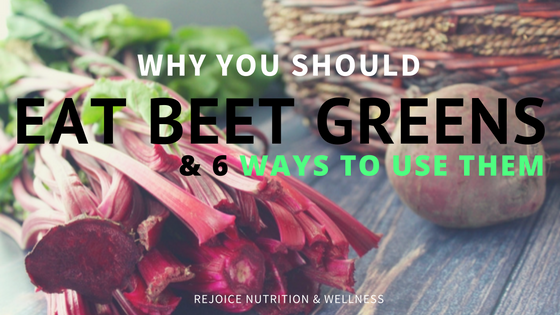Don’t throw away those beet tops! When you spend money on a bunch of beets or pull your beets from the garden, pause before you toss those tops and instead add them to your meals. Most of us have picked up a beautiful bunch of beets bundled together at the store or market. Attached to those beets are these long colorful stems with deep green leaves ornamenting their tops. We take them home and most of us just hack off the stems and keep the beets themselves. Those leaves are exceptionally nutrient dense and deliver excellent nutrition. You are paying for the beet and their greens; so let me show you 5 ways to incorporate them into your meals.
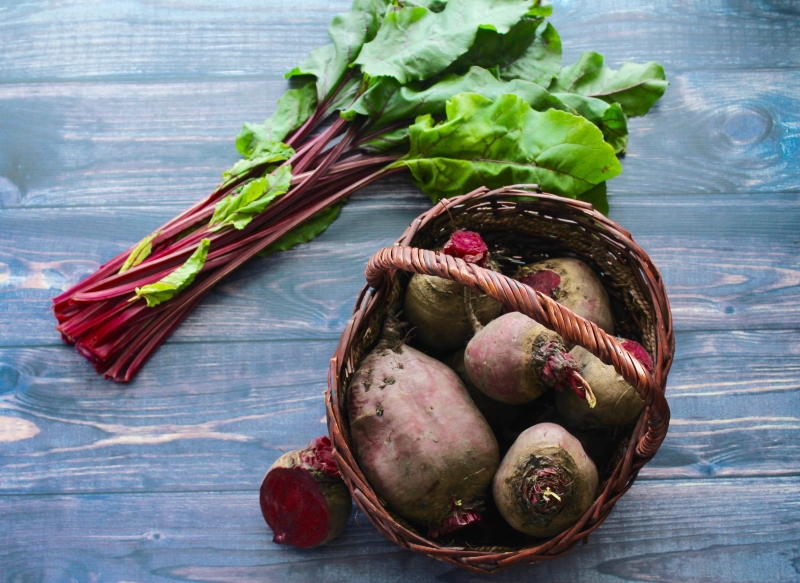
Selecting, Storing, and Preparing Beet Greens:
Now that you don’t plan to throw away half this magnificent vegetable, I guarantee you will take a closer look at the greens next time. So look to ensure there are no cracked, bruised, or shriveled greens. You want the leaf to be full and alive looking versus soft, limp, and brown. Small beets usually have more delicately flavored greens whereas the larger beets can be tougher and woodier in flavor.
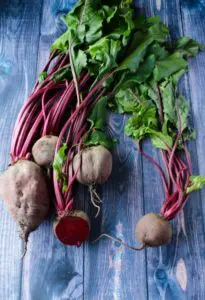 When you get home, cut the greens off at the top of the beetroot. Gently wash the leaves in cold water and pat to dry with a paper towel. It is best to consume the beet greens right away after washing. If you wish to store your beet greens, do not wash them before placing them in the fridge but place them in an airtight container or plastic bag (ensuring the air is pressed out).
When you get home, cut the greens off at the top of the beetroot. Gently wash the leaves in cold water and pat to dry with a paper towel. It is best to consume the beet greens right away after washing. If you wish to store your beet greens, do not wash them before placing them in the fridge but place them in an airtight container or plastic bag (ensuring the air is pressed out).
Keeping any vegetable especially greens in its whole raw form maintains the integrity of its nutrient profile. However, there are nutrient-rich ways to cook and prepare them. Using low heat only when cooking, not boiling or frying these stems, and not overcooking help to maintain vitamins and minerals within the beets. Beet greens are full of iron and squeezing fresh lemon on them provides vitamin C, which supports the body in absorbing the iron. Also drizzling a cold-pressed avocado oil will not only bring out the flavor of beet greens but can help your body assimilate some of the green’s fat-soluble nutrients like Vitamin E and K.
Heath benefits
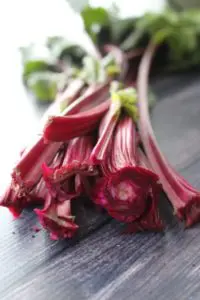 Beet greens share a similar taste and texture to their cousin Swiss chard. They are all members of the chenopod food family that has amazing health benefits. Beet greens offer potent antioxidant protection in the form of carotenoids such as beta-carotene, zeaxanthin, and lutein, which promotes eye health and may reduce the development of cataracts, and when the body converts carotene to vitamin A it boosts immunity.
Beet greens share a similar taste and texture to their cousin Swiss chard. They are all members of the chenopod food family that has amazing health benefits. Beet greens offer potent antioxidant protection in the form of carotenoids such as beta-carotene, zeaxanthin, and lutein, which promotes eye health and may reduce the development of cataracts, and when the body converts carotene to vitamin A it boosts immunity.
Beets greens are also low in calories and high in fiber, folic acid, and iron. The beet green has twice as much potassium and calcium as the beet itself. The calcium and magnesium in beet greens are also known to work collaboratively to promote bone and heart health, as well can have a calming effect on the nervous system. Finally, beet greens cleansing properties are said to promote smooth skin and minimize the build-up of cellulite.
6 Ways to use Beet Greens:
- As a substitute for bread. Makes a great green wrap!
- Sauté them in coconut oil over very low heat with lemon juice, garlic, and sea salt
- Add them to your favorite juice recipe (beet green juice)
- Chop up the greens and stems and add them to your favorite stock recipe (check out my immune-boosting bone broth).
- Chop them up and mix them with your other salad greens
- Blend them with a little filtered water or just juice the greens. Pour the liquefied beet greens into ice cube trays and freeze. Pop them out and store them in an airtight container in the freezer. This way you can add them to smoothies, soups, and stocks anytime.
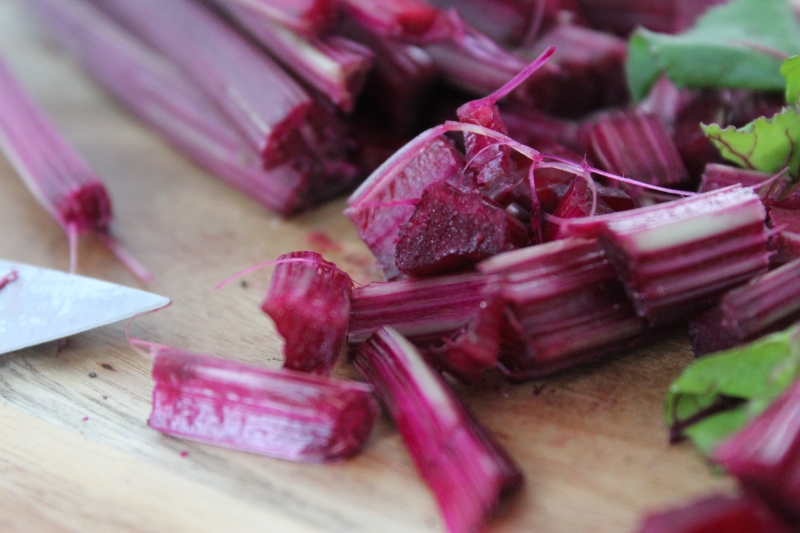
I hope you feel informed and excited about using the whole beet, literally from root to tip. If you have other ways that you use your beet greens, I would love to hear from you! Post a comment or send me a message on my contact page.

